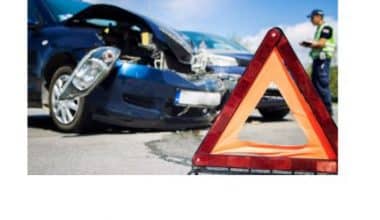When a driver has full coverage car insurance, they are financially protected against damages to their vehicle, that of their passengers, and other vehicles in the event of an accident. While it’s true that no car insurance policy will safeguard you against every eventuality, “full coverage” does cover you in the vast majority of situations. Read further to learn more about the best cheap full coverage car insurance you can get. Let’s dive in now!
What Is Full Coverage Car Insurance?
Liability, collision, and comprehensive coverage are the three main components of a full-coverage car insurance policy. In addition to uninsured motorist coverage (UM) and underinsured motorist coverage (UIM), comprehensive coverage may also include medical payment coverage (MedPay) or personal injury protection (PIP), depending on where you live.
Liability car insurance, which protects others from financial losses due to accidents you cause, is typically required by states as a condition of registration. All of those expenses, as well as any repairs to your car or home, are covered by comprehensive insurance.
What Is included in Full Coverage Car Insurance?
All of the features found in state minimum coverage are also included in full coverage car insurance, along with a number of extras. However, each person is free to choose the protections they believe they require. On the other hand, cheap full coverage insurance usually covers the following minimum:
#1. Liability coverage
This is generally split into two parts: liability for harm to persons and liability for damage to property. Although almost all states mandate that drivers carry a certain level of coverage, many drivers who want full coverage opt to buy higher coverage limits.
#2. Collision coverage
If the policyholder is at fault in an accident, this coverage will pay to fix the other driver’s vehicle. In the event of a single-car collision, it also pays. But it doesn’t cover collisions between animals and vehicles.
#3. Comprehensive coverage
If the policyholder’s car is damaged by things like bad weather, vandalism, or a collision with an animal, comprehensive coverage will pay to get it fixed. Additionally, it starts working if the policyholder’s car is taken. These are options that all insurance provides. The majority of insurance providers also provide a variety of add-on coverage options for drivers.
Read Also: LIABILITY VS. FULL COVERAGE CAR INSURANCE: Which is Better 2023
What Are the State Minimum Requirements for Full Coverage?
Each state is free to establish its own minimum standards for car insurance. The majority of states just need you to have liability and bodily injury insurance. It is not necessary to have additional coverage for your vehicle.
What Does Full Coverage Pay For?
Generally speaking, full coverage for your car includes the following:
- Up to the policy’s maximum limits, the harm you cause to other people.
- When you are at fault or the other driver does not have insurance, your car insurance will pay for repairs up to the car’s worth less than your deductible.
- Damage brought on by theft or a natural disaster.
- Payment for your passengers and your own medical care if you are at fault.
- If an uninsured motorist strikes you, injuries to you and your passengers.
What Doesn’t Full Coverage Insurance Pay For?
The full coverage of insurance excludes:
- Injury brought on by street racing
- Injury brought on by off-road driving
- Using the car as part of a car-sharing scheme
- Natural disasters, like war
- The vehicle is destroyed or seized by the government or civil authorities
- Using the car for business travel and delivery
- Deliberate harm
Cheap Full Coverage Car Insurance
The following are some of the best cheap full coverage car insurance that you can go for:
#1. Geico
Geico continuously provides affordable rates for car insurance in almost all states. For drivers with spotless histories, the average yearly rate for full coverage car insurance is only $2,314 nationwide. It also provides a broad list of discounts to eligible policyholders and is remarkably forthright about how much money each one will save.
Even though Geico doesn’t have as many add-on benefits as some of its rivals, it does include some special safeguards, like mechanical breakdown coverage. This assists policyholders in covering technical problems that are generally not covered by car insurance.
#2. State Farm
Insurance for car rentals, ridesharing, and breakdown assistance are just some of the options available through State Farm’s auto policy. In addition to bundling, it offers additional discounts and has 19,000 agents nationwide. With more than $70 billion in annual premiums, State Farm is the biggest property and casualty insurance provider in the United States. It ranks highest for car insurance as well. J.D. Power’s 2022 U.S. Auto Insurance Study for the Southwest ranks State Farm as the company with the highest overall customer satisfaction rating. It is also among the select few providers of life insurance to earn the highest ranking from AM Best.
#3. Farmers
According to Farmers’ website, if you bundle your house and car insurance with them, you can save up to 20% and save an average of $741. When you buy multiple policies (such as Home, Umbrella, Life, Business, Boat, Motorcycle, Motorhome, and Recreational Vehicle) with Farmers, you can save up to 45% on your Farmers Auto insurance. As a car perk, you can get a new car, have accidents cleared, get a discount for being a safe driver, and more. Guaranteed replacement costs, forgiveness of claims, diminishing discounts, and claim-free discounts are some of the benefits of home ownership.
With approximately $25 billion in annual premiums, Farmers is the ninth-largest property and casualty insurance company and the seventh-largest auto insurance company in the United States.
#4. American Family
Compared to many of its rivals, American Family offers a greater selection of car insurance discounts. American Family provides policy savings, discounts for young drivers and families, and discounts for safety. Common choices include discounts for having many policies and going without claims. However, qualifying drivers may choose to save for non-traditional purposes as well.
Drivers under 25 who decide to volunteer in their free time may be eligible for an additional discount, as may those who move from a rival to an American Family. Furthermore, drivers who choose to participate in a monitoring program might earn prizes through the lucrative KnowYourDrive option. American Family provides the following additional policy discounts: Incentives such as Pay How You Drive, low mileage, early-bird discounts for obtaining quotes at least seven days before a policy goes into effect, loyalty discounts, and more are available to customers who switch from competitors.
#5. Amica
Amica is the nation’s first and oldest auto insurance mutual and operates in all 48 contiguous states. It provides a large range of discounts and coverages. It also offers drivers savings of up to 25% when they insure several cars and up to 20% when they bundle home and auto insurance, according to its website. Not every state offers discounts.
Who Is Full Coverage Car Insurance For?
For many drivers, the best option is full coverage car insurance. Who needs to get full coverage car insurance? The following are the people who need full coverage insurance:
#1. Drivers who are leasing a car or have a car loan
Full coverage insurance is typically required by lenders and leasing companies. If you don’t keep up the necessary amount of coverage, your lender may purchase pricey force-placed insurance, demand full repayment of the loan, or even take back your car. Therefore, everybody who has a lease or loan agreement needs to be sure they have full coverage if needed.
#2. Those who were unable to pay for costly repairs or to replace their complete car
A driver who has liability-only coverage is not covered against damage to their own car unless the accident and its aftermath are the result of another person’s fault. Full coverage car insurance is a must for anyone who can’t pay to fix or replace their car out of their own pocket.
#3. Drivers who want to protect their assets
People who can afford to buy a new car or pay for expensive fixes might not want to because it’s not a good use of their money. It’s critical to get enough insurance to safeguard those possessions. It makes financial sense to pay reasonable monthly premiums to pass on the risk of larger losses to the insurance.
Should I Get Extra Coverage?
A new car is an expensive investment that should be safeguarded, even if your lender doesn’t insist on insurance. In the event of an accident or other catastrophe that is beyond your control, comprehensive collision insurance will cover the costs of car damage. If the worth of your car is low—less than $2,000—it might not be wise to have physical damage coverage. If you choose liability insurance only, you should be prepared to pay for a replacement vehicle out of pocket in the event of a total loss.
Extra coverage, like roadside help or reimbursement for rental cars, is usually not expensive, and you can choose to buy it if you want to.
What Does Full Coverage Insurance Cost?
The cost of a comprehensive policy, which includes physical damage coverage and other options, will be higher than that of a liability-only policy. Comprehensive and collision coverage cost less with a higher deductible, but how much extra you’ll pay for them depends on a number of factors, such as the age, make, and model of the automobile you wish to insure.
How to Compare Full Coverage Car Insurance Quotes
Take the following actions to compare quotes for full coverage car insurance:
#1. Ascertain the required level of coverage
It’s critical to understand the precise coverage required while comparing insurance. Policyholders may choose to purchase a variety of coverage options under a full-coverage policy, such as:
Liability insurance: Having liability insurance for injuries and property damage is a legal requirement in the majority of states. The insured receives compensation if an accident they cause causes harm to another party.
- Collision insurance: States do not need this, but lenders might. After an accident that was not the fault of another driver, the policyholder will receive compensation for any damage to their own property.
- Comprehensive insurance: States don’t need this, but lenders might. It covers the policyholder’s property in the event of theft or damage from a covered source other than an accident.
- Gap insurance: Lenders might need this. It covers the difference between what the policyholder owes on a stolen or totaled vehicle and what the insurer pays out, determined by the vehicle’s worth at the time of the incident.
- Rental car reimbursement: This covers the cost of a rental car while a car is being repaired for an occurrence that falls under coverage or until a stolen or totaled car can be replaced. Usually, it is not necessary.
- Protection from personal injury: Certain states demand this. Regardless of who is at fault, it covers the policyholder’s post-accident medical expenses and lost income.
It is up to drivers to choose the types and amounts of coverage they choose. The driver will also have to choose how much of a fee they want to pay. When a covered loss occurs, this is the amount the motorist has to pay out of pocket before insurance pays the remaining balance. Car owners can obtain precise rates for full coverage insurance by first figuring out how much coverage is required.
#2. Compile the vehicle and driver’s information
Insurance companies will require details on the insured car as well as the drivers in the household. Get insurance quotes first, and then look into the driving record and accident history of everyone who will be protected. Get the vehicle’s identification number (VIN) as well, since insurers might use this to find out the manufacturer, model, and safety features of the vehicle. It is feasible to obtain precise pricing using this information.
#2. Get prices from several different car insurance providers
Obtaining many insurance quotes is crucial in order to determine which providers offer the most competitive prices. They can help with this by hiring an independent insurance provider. You can also obtain these prices from several insurance companies online. To guarantee they have a representative sample of what various insurers would charge them to supply full coverage insurance, those shopping for coverage should obtain at least three quotes.
#3. Analyze comparable policy terms
After collecting quotations, drivers should make sure they are comparing similar insurance. Verify that each insurer is giving the same kinds and quantities of coverage and that they are offering all of the add-ons and discounts that are available. It is feasible to determine which insurers provide the most reasonably priced full coverage insurance after verifying the quotes are for the same degree of protection.
#4. Examine an insurer’s performance
Lastly, drivers should ensure that the insurance company they choose to compare rates with is reputable and will genuinely cover their needs in the event of a covered incident by paying a claim within an acceptable timeframe. Cost is important, but so is the insurer’s commitment to promptly and equitably fulfilling claims following a covered incident. Therefore, avoid selecting an insurance company with a bad track record of managing claims or providing poor customer service.
The Advantages of Full Coverage Car Insurance
If you’re looking for protection in the event of an accident, full coverage car insurance is the way to go. Following an at-fault accident, the policyholder with limited coverage is responsible for covering the cost of replacing or repairing their own car. However, regardless of who caused the collision, the repairs are paid for with full coverage from car insurance.
Although the premium is more than the state minimum coverage, the additional coverage lessens the possibility that, when their deductible is satisfied, the policyholder would have to pay for damages out of pocket.
Is Full-Coverage Car Insurance Necessary?
Unless you can afford to replace or repair your car if it has a low value, we advise having full coverage insurance. Choosing state minimal insurance will save you money upfront, but you may find yourself in a tight place financially if your car is totaled or suffers major damage. It can be advantageous for your pocketbook and your peace of mind to have full-coverage insurance if you can afford it and your car is worth more than the premium.
Is Full Coverage Really Worth it?
Although full coverage costs more than the state minimum, it may be worthwhile if you can afford it. A full-coverage policy covers you and your car in almost any scenario. In contrast, liability coverage only covers the other driver and their passengers in the event that you cause an accident.
What Distinguishes Comprehensive Coverage from Full Coverage?
The two words sound alike, but comprehensive insurance is actually a part of a full-coverage policy. Insurance that covers non-collision events like theft, vandalism, fire, or natural catastrophe damage to your car is known as comprehensive coverage. Complete coverage often consists of collision, comprehensive, and state minimum coverage.
How Long is it Appropriate to Maintain Full-Coverage Car Insurance?
If the value of your car is less than the amount of your policy or if you can afford the repairs yourself, you should cancel your full-coverage car insurance. It may no longer be financially worthwhile to have full coverage if your annual premium exceeds the amount that would be awarded in a claim.
Final Thoughts
It’s crucial to understand that although full coverage can offer the most protection, in the event that you cause an accident, you will still be responsible for paying your deductible. While most states mandate certain levels of liability coverage, collision and comprehensive limits are typically up for negotiation. You get to choose the deductible amount that works best for you.
- BEST CHEAP FULL COVERAGE CAR INSURANCE 2023
- Liability or Full-Coverage Car Insurance: Which Is Better?
- VIRGINIA CAR INSURANCE: Coverage, Cost & Requirements






